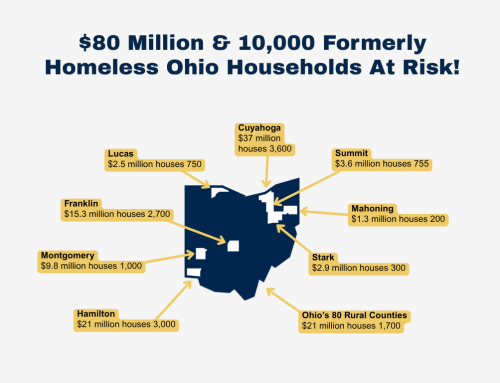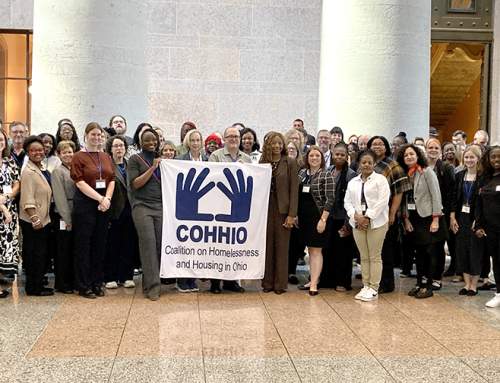Housing advocates and public health experts described a “dual crisis” facing Ohio Wednesday as emergency shelters struggle to respond to a coronavirus outbreak among people experiencing homelessness.
The Coalition on Homelessness and Housing in Ohio’s report Double Jeopardy: The Coronavirus & Homelessness in Ohio found emergency shelters and other homeless programs lack essential supplies and space necessary to implement basic guidance for containing the spread of COVID-19. (Download report)
Report authors surveyed the leaders of Ohio’s continuums of care – regional homeless systems – and found:
- 79 percent don’t have the ability to provide the financial assistance necessary to reduce admissions and minimize overcrowding in shelters;
- 87 percent don’t have sufficient space to isolate and quarantine clients who show symptoms of COVID-19;
- 71 percent don’t have enough sanitation and hygiene supplies on hand to prevent transmission of the coronavirus;
- 65 percent have reduced services for people experiencing homelessness due to the loss of staff and volunteers.
Report author Barbara Poppe, former executive director of the U.S. Interagency Council on Homelessness with a degree in epidemiology, said Ohio is facing a collision between two public health crises – the coronavirus and homelessness.
“Thousands of Ohioans enduring homelessness rely on emergency shelters – typically large, overcrowded congregate settings where conditions are optimal for spreading COVID-19,” she said. “There’s still time to contain the outbreak, but we must deconcentrate the shelters and ensure that these programs have enough space to isolate and quarantine people who are symptomatic or have been exposed to the virus.”
Jessica Jenkins, assistant director of Montgomery County Human Services Planning & Development Department who administers the local homeless system, said Dayton-area shelters are struggling to maintain staff levels to continue operating during the crisis.
“People experiencing homelessness already have difficult and uncertain lives. We’re going to keep doing all we can to ensure that they – and the people who serve them – are given the best protection possible during this crisis,” Jenkins said. “But our county can’t do it alone. We need more personal protection equipment, cleaning supplies, staffing, training, hotel rooms, food, and healthcare services.”
Montgomery County is one of several regional homeless systems working to move vulnerable residents out of shelters and into hotel rooms so they can shelter in place during the epidemic.
COHHIO Executive Director Bill Faith called for a large-scale mobilization of government, business, philanthropic, faith-based, and nonprofit sectors to limit the spread of COVID-19 in homeless shelters and encampments.
“Gov. DeWine and Director Acton doing a great job managing this crisis, but we need to make sure homeless Ohioans don’t get lost in the shuffle because Ohio’s stay-at-home order won’t protect people who have no home,” he said. “This is an immediate, acute crisis now. We all need to pull together to defeat this silent enemy.”
COHHIO is asking the Ohio General Assembly to appropriate $20 million for emergency homeless services in legislation to respond to the coronavirus pandemic. In addition, the inclusion of $4 billion for homeless programs in the latest federal coronavirus response package is a good start, but Faith said Ohio’s congressional delegation should support expanded funding for the nation’s homeless system in the next bill.
Since state and federal funding could take weeks to reach Ohio’s homeless population, COHHIO created the Pandemic Emergency Fund with $500,000 from the organization’s own rainy day fund to provide immediate relief to front line homeless agencies. With contributions from other donors, the fund now has a balance of over $660,000, and will start issuing checks Thursday to local homeless agencies.
COHHIO urges concerned Ohioans to donate to their local shelter programs or contribute to the COHHIO Pandemic Emergency Fund at: https://cohhio.org/covid-19/








